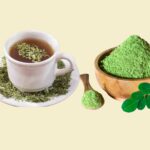The muscular system is one of the most crucial systems in the body. Responsible for motion, stability, and posture, it is composed of various types of muscle fibers, including slow-twitch and fast-twitch muscle fibers. In this article, we will discuss the differences between these 2 types of muscle fibers, their functions, and how to train them.
Table of Contents
What are Slow-Twitch Muscle Fibers?
Slow-twitch muscle fibers, also called type I muscle fibers, are important in endurance activities. These fibers are specifically created to provide energy for prolonged activity, such as long-distance running, biking, and swimming.
Unlike other kinds of muscle fibers, slow-twitch muscle fibers contract gradually, which implies they use less energy than fast-twitch muscle fibers, which permits them to sustain contractions for longer durations, making them perfect for endurance activities. In addition, slow-twitch muscle fibers are highly resistant to fatigue, making them important for activities requiring extended exertion durations.
Slow-twitch muscle fibers are defined by their smaller-sized size and darker color than fast-twitch muscle fibers. The presence of myoglobin allows slow-twitch muscle fibers to use oxygen more efficiently, supplying energy for longer durations.
Activities that engage slow-twitch muscle fibers include running, biking, swimming, hiking, and walking. These activities need extended exertion and rely on the body’s aerobic energy system. By regularly participating in endurance activities, individuals can increase the variety of slow-twitch muscle fibers, leading to enhanced total and endurance physical fitness.
In short, slow-twitch muscle fibers play an essential function in endurance activities. They are accountable for offering energy for extended durations and are extremely resistant to tiredness.
What are Fast-Twitch Muscle Fibers?
Fast-twitch muscle fibers are type II muscle fibers and have a faster contraction speed than slow-twitch muscle fibers. Depending on their metabolic process and contraction characteristics, fast-twitch muscle fibers can be further classified into type IIa and type IIb fibers. They are responsible for quickly generating a large amount of force, making them ideal for sprinting, jumping, and weightlifting.
Fast-twitch muscle fibers have a higher capacity for anaerobic metabolism and can produce energy without oxygen, making them essential for activities that require short bursts of energy. However, these muscle fibers fatigue quickly, requiring more time to recover between contractions.
The Difference Between Slow-Twitch and Fast-Twitch Muscle Fibers
The main difference between slow-twitch and fast-twitch muscle fibers is their capability to sustain contractions and create force. Slow-twitch muscle fibers are much better suited for endurance activities and can sustain contractions for longer periods, whereas fast-twitch muscle fibers are fit for explosive and powerful motions but fatigue quickly.
Another significant difference is in the method they use to create energy. Slow-twitch muscle fibers create energy through aerobic metabolism, utilizing oxygen to break down glucose and produce energy. In contrast, fast-twitch muscle fibers produce energy through an anaerobic metabolic process, breaking down glucose without oxygen to produce energy.
In addition to the differences in energy, both muscle fibers also have unique physical attributes. Slow-twitch fibers are red in color, due to their high concentration of myoglobin, a protein that binds to oxygen. They also have a greater density of mitochondria, the organelles responsible for energy production, enabling them to sustain contractions for longer periods.
On the other hand, fast-twitch fibers are white due to their lower myoglobin concentration. They also have a larger diameter and fewer mitochondria, enabling them to create more force in a shorter period, leading to quick fatigue.
The circulation of slow-twitch and fast-twitch fibers varies between individuals, with some having a greater proportion of one type over the other. It can affect athletic efficiency, with those having a greater proportion of fast-twitch fibers mastering activities such as sprinting or weightlifting, while those with a greater proportion of slow-twitch fibers might master endurance activities.
Tips To Understand The Difference
Understanding the differences between slow-twitch and fast-twitch muscle fibers can assist individuals in customizing their training programs to their objectives and genetic makeup.
Endurance professional athletes might gain from concentrating on workouts that target slow-twitch fibers, such as long-distance running or biking, while power athletes might gain from workouts that target fast-twitch fibers, such as weightlifting or sprinting. Overall, the mix of both types of training can lead to a well-rounded fitness program and ideal athletic performance.
Related: 7 Reasons: Why Aren’t My Arms Growing
Training Slow-Twitch Muscle Fibers
Training slow-twitch muscle fibers can also include increasing the strength and duration of cardio activities such as running or biking.
It can be accomplished by slowly increasing the distance, duration, or resistance in time, permitting the body to adjust accordingly.
Another effective method to train slow-twitch muscle fibers is through circuit training. It involves performing a series of exercises with very little rest, enhancing endurance and fatigue resistance.
It’s also important to keep a well-balanced training regimen consisting of strength and flexibility exercises. It will help to preserve total muscle health and avoid injury.
Furthermore, to improve the strength of slow-twitch muscle fibers, include high-repetition, low-weight workouts such as bodyweight squats, lunges, and push-ups.
These workouts stimulate the slow-twitch muscle fibers, improving their strength and endurance.
Proper nutrition is vital when training slow-twitch muscle fibers. Ensure you are consuming enough carbs, protein, and healthy fats to support the energy needs of endurance activities. Remaining hydrated is also essential for ideal muscle function and recovery.
Training Fast-Twitch Muscle Fibers
Training fast-twitch muscle fibers requires various methods than training slow-twitch muscle fibers. Fast-twitch muscle fibers respond best to high-intensity, explosive activities that require a quick burst of force. Plyometric exercises such as box dives, explosive sprints, and conditioning ball throws can help improve the power and volatility of fast-twitch muscle fibers.
Related: Top 5 Medicine Ball Exercises For Arms
In addition to explosive movements, heavy lifting is also crucial for training fast-twitch muscle fibers. Add low-repetition, high-weight workouts such as heavy squats, deadlifts, and bench-press into your training routine can help stimulate fast-twitch muscle fibers and enhance their strength and power.
It’s important to note that ignorance of any muscle fibers can affect overall fitness. For that reason, it’s necessary to incorporate a balance of both power-based and endurance activities into your regular training to optimize muscle advancement and general athletic efficiency.
FAQs
Can I change my muscle fiber type?
You can’t change the type of muscle fibers you have, but you can influence their advancement to some extent through training. For instance, endurance training can enhance the endurance and resistance to fatigue of slow-twitch muscle fibers, while strength training can improve the strength and power of fast-twitch muscle fibers.
How do I know what type of muscle fibers I have?
You can’t identify your muscle fiber type through a basic test, but some signs can give you an idea about your muscle fiber type.
For instance, if you stand out at endurance activities like running or cycling, you likely have more slow-twitch muscle fibers. If you stand out at explosive activities like sprinting or weightlifting, you likely have a higher proportion of fast-twitch muscle fibers.
Should I just train one type of muscle fiber?
No, training both kinds of muscle fibers for total physical fitness and efficiency is crucial. Depending upon your objectives, you might wish to stress one type over the other, but ignoring any one type of fiber can result in imbalances and restrictions in your total physical fitness.
Can genetics affect my muscle fiber type?
Yes, genetics play a substantial role in identifying your muscle fiber type. Some individuals are genetically inclined to have a greater proportion of slow-twitch or fast-twitch muscle fibers, which can affect their athletic capabilities and capacity.
Nevertheless, training and other life aspects can still affect the development and performance of your muscle fibers.
Can I train both slow-twitch and fast-twitch muscle fibers at the same time?
Yes, it is possible to train both kinds of muscle fibers simultaneously. Lots of workouts include both slow-twitch and fast-twitch muscle fibers. For example, running involves both slow-twitch muscle fibers for endurance and fast-twitch muscle fibers for speed. It’s crucial to have a well-rounded workout routine consisting of endurance and strength training to target all muscle fibers.
Are slow-twitch muscle fibers weaker than fast-twitch muscle fibers?
Not always. Slow-twitch muscle fibers might not produce as much force as fast-twitch muscle fibers; however, they are extremely resistant to fatigue and can sustain contractions for longer durations. On the other hand, fast-twitch muscle fibers may be more effective but fatigue rapidly.
The strength of muscle fibers also depends upon the person’s training and genetic makeup. Slow-twitch muscle fibers might not create as much force as fast-twitch muscle fibers, but they are extremely fatigue-resistant and can sustain contractions for longer durations.
How do I know if I have more slow-twitch or fast-twitch muscle fibers?
There is no conclusive method to identify an individual’s specific ratio of slow-twitch to fast-twitch muscle fibers. However, you can make an educated guess based on your physical capabilities and choices.
Suppose you are naturally better at endurance activities such as running or cycling. In that case, you may have a higher proportion of slow-twitch muscle fibers, but if you are naturally good at explosive motions such as jumping or sprinting, you may have a higher proportion of fast-twitch muscle fibers.
A Word from Blogzah
Slow-twitch and fast-twitch muscle fibers are two types of muscle fibers with different functions and training methods. Slow-twitch muscle fibers are better fit for endurance activities, while fast-twitch muscle fibers are much better suited for effective and explosive motions.
Reference
- “Muscle Fiber Types” by National Institute of General Medical Sciences:
- “Muscle Fiber Types: Fast Twitch vs Slow Twitch” by Openfit:
- “Type I Muscle Fibers vs. Type II Muscle Fibers” by ACE Fitness:
- “The Difference Between Slow Twitch and Fast Twitch Muscle Fibers” by Verywell Fit:
- “Training Your Muscle Fibers: How to Target Type I and Type II Fibers” by Healthline:
















